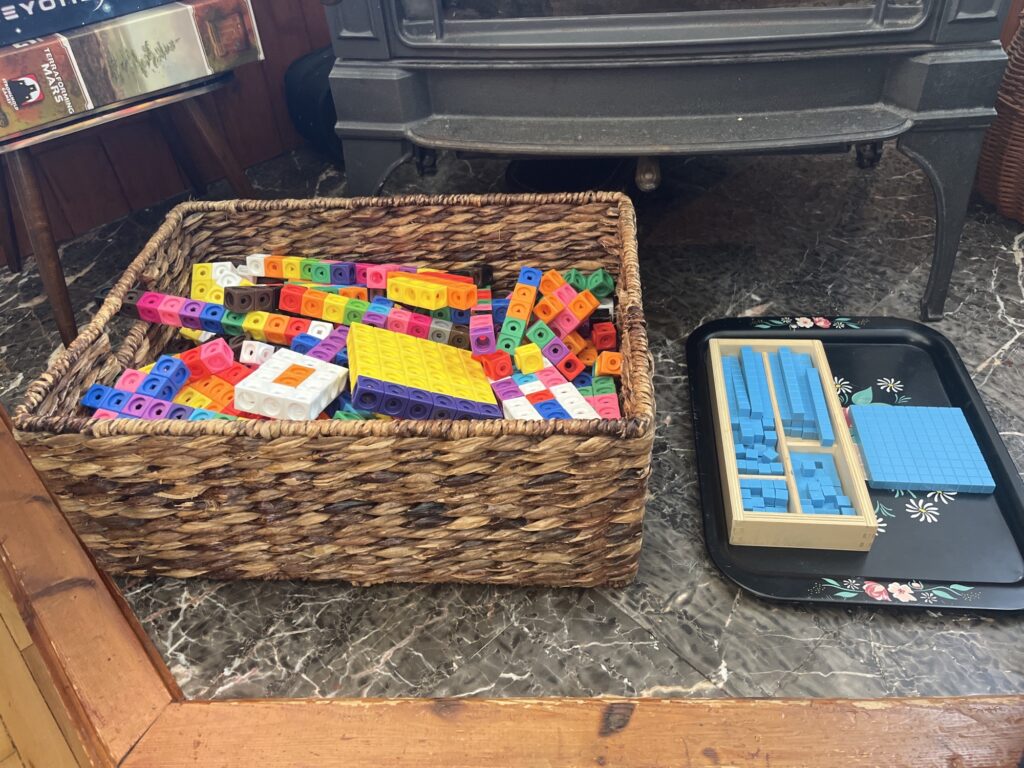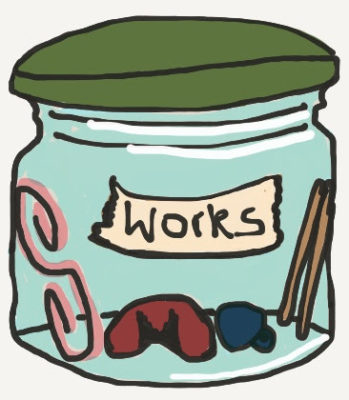There are a lot of Montessori materials, many more then fit in a home! And yet, I have acquired MANY of them! But here is the short list of the reading and math materials/activities that I highly recommend for homeschooling ages 2-6!
Beginning Reading and Writing

- Use ANY little toys or household items to play sound games (“Point to something that starts with the /b/ sound!” “What sounds do you hear at the end of the word, plant?”) until your child has phonetic awareness, meaning they can break a word down into a sequence of sounds.
- Use magnetic letters to associate symbols with their most common phonetic sound. Ex. B and b make the /b/ sound.
- Use a moveable alphabet (could be magnetic or not, but needs multiple of each lowercase letter) to play around together, reading and writing words phonetically. Ex. One person writes “jump” and the other person jumps.
- Use a whiteboard or chalkboard to practice writing letters (and numbers)
- Read aloud any and all books, signs, labels, etc.
- Have paper and pencil always available for the children to freely practice drawing and writing. Help them write their favorite words. Model drawing and writing for the joy of it and for real purposes, such as grocery lists, letters to relatives, and todo lists.
- Find any early readers your child wants to read, and help them as much as they need to make it a pleasant experience. If it’s not pleasant, wait a year and try again.
- When they want to improve their handwriting, provide them with any normal handwriting practice book.
Beginning Math

- Use Math-link cubes to PLAY, practice counting up to one hundred, and quiz each other on addition and subtraction within 20.
- Use any base ten material (Montessori’s is golden beads, but any material that has ones, tens, and hundreds in their correct relative size works) to practice making numbers into the hundreds, and quizzing each other on addition and subtraction into the hundreds.
- Use paper to make number labels to learn the symbols associated with the numbers, and if they need help understanding multi-digit numbers, buy some “hide zero cards”
- Use a white board or chalk board to practice writing numbers and simple problems
- PLAY with a calculator and measuring tools (thermometer, ruler, clock, scale)
Keep early math practice playful and when giving a problem always have math-link cubes or base ten blocks nearby for the child to use to work out the problem if needed.
Scope creep here, but I can’t help myself from also recommending the following resources, which all present math in a playful manner, teaching math through joy!
- Numberblocks, BBC show for ages 3-99 that provides a super concrete way of thinking about numbers and basic math, all though short songs and playful stories.
- Life of Fred, a super quirky low-demand math curriculum (K-12) that presents math only as it’s needed by the main character. It’s a funny story to read as a family, and learn some math without really trying.
- Hopscotch Count By Songs (or other Skip Counting songs or videos) – listening to these on repeat for a while provides a great foundation for understanding and memorizing single-digit multiplication
- Beast Academy, a rigorous problem-solving focused math curriculum (grades 1-5) that presents a topics through fun comic book style stories.

What did I miss? 🙂
